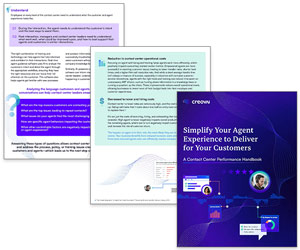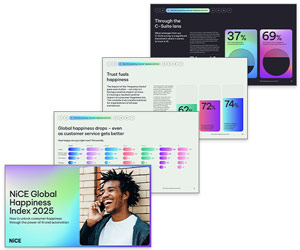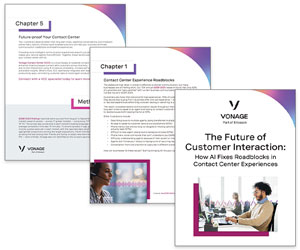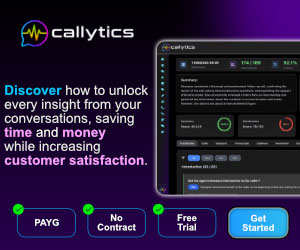Writing a great customer service letter isn’t just about getting the grammar right, it’s about making the customer feel heard, respected, and valued.
Whether you’re responding to a complaint, a query, or simply saying thanks, the way you write can make a lasting impression.
In this guide, we’ve pulled together 10 practical tips (plus a sample letter) to help you improve your writing and deliver a better customer experience, every time.
10 Tips to Writing a Customer Service Letter
1. Start by Saying “Thank You”
Customers have plenty of choices, so opening your letter by sincerely thanking them immediately shows you value their business. This simple gesture sets a positive tone and builds goodwill from the start.
Right after expressing your gratitude, dive straight into addressing their concerns, prioritizing the most important points from their perspective.
Reinforcing how much you appreciate their loyalty throughout the letter helps customers feel truly valued, not just another transaction.
2. Use Everyday Language and Stick to One Idea per Sentence
When writing to customers, simplicity is key. Imagine you’re explaining something to a friend or family member, your tone should feel clear, friendly, and easy to follow.
That means breaking down dense information into short sentences, avoiding jargon or acronyms, and sticking to one idea per sentence.
As Fran Fish says, “Writing for service is hard. At school, we’re taught to form complex sentences and paragraphs and to build up our vocabulary.
For service, we need to pare this down, to share information in a much simpler way. So, if organisations are struggling to tackle communication channels, they’re in good company!”
It’s not about dumbing things down, it’s about making information accessible and human. Writing this way helps customers feel understood, not overwhelmed.
3. Use Headings and Bullet Point Large Chunks of Information
Long paragraphs can quickly overwhelm a reader. That’s why using headings and bullet points is so effective, they help organise the content, make the structure clearer, and guide the customer to what matters most.
While short, simple sentences are a great starting point, bullet points take it a step further by creating visual breathing space and highlighting key details.
“If you open up a letter and all you see is words and long paragraphs, in the first instance, its hard to understand what’s important. Bullet points and headings are especially useful for this.
Headings are especially great, as they help to signpost to the ready what is relevant to them, making the letter as clean and simple as possible.” – Fran
4. Avoid Cold, Overly Formal Language
There’s a lot of confusion about what “professional” means in letter writing for customer service. Many believe “we need to sound and write as a professional company”, yet this is a common misconception and often leads to companies being overly formal.
“Formal language is cold and distancing. It’s not right for customer service. There are simple techiniques that can be learned to make letters professional and clear, without making them formal,” said Fran.
The trick is developing a tone of voice that fits your brand. Train advisors to be warm, empathetic and positive and you’re halfway there, while using active language instead of passive language is also important.
Active language helps to take ownership of the customer query. You can test that you’re writing in the active by adding the words “by robots” to the end of each sentence. If the sentence still makes sense, it is written in the passive. However, if it doesn’t, it is written in the active.
5. Direct the Customer to Any Supportive Documents
To add value to the letter, direct the customer to any additional documents or guidance notes. This can help the customer to easily find information for themselves and prevent them from having to write to the contact centre again.
In turn, this helps to reduce repeat customer contacts. However, make sure further reassurance is offered, so the customer feels happy to contact you again with another query.
6. Set Expectations With Timeframes
While this won’t be applicable to all query types, offering next steps and time expectations is key when handling complaints, as they help to reassure customers.
Fran explains, “with complain handling, all customers are really interested in is ‘are you listening to me?’ ‘do you care about me?’ and ‘what are you going to do about it?'”
Promotional offers, thank-you letters and booking confirmations don’t necessarily need “next steps” and, in some cases, offering them in a letter may increase contacts.
7. Open the Dialogue for Any Problems to Be Quickly Rectified
Most customers are familiar with the feeling of dread that comes with making a complaint to a company… How long will I wait on hold? Will they believe me? Will my issue be resolved?
Opening up the dialogue early and promising a positive response helps to remove this worry from any follow-up contact that may be necessary.
8. Remember That Listening Isn’t Just for Phone Calls
Listening is often associated with phone conversations, but it’s just as important in written communication. Customers want to feel heard, and showing them you’ve truly understood their issue can go a long way in building trust.
“We all have the ability to be better listeners, improve our communication skills and build rapport through language and words.” – Fran.
One simple way to show you’ve listened is by mirroring the customer’s language. Use the same terms or phrases they used when describing their issue. This not only reinforces that you’ve read and understood their message, but also helps to build rapport.
Take a look at the example template, it begins with, “Thanks for getting in touch about…”. That short phrase matters. The “about” section gives advisors the chance to repeat the customer’s concern in their own words, making the response feel more personal, thoughtful, and attentive.
9. If Asking for Feedback, Explain Why It’s Important
Encourage customers to give feedback for the benefit of the community and to help future customers in their purchasing decisions.
By doing this, the advisor can help to reassure customers that the time they spend giving feedback isn’t just a “back-patting” exercise.
10. Don’t String Together Good Paragraphs From Different Letters
It might be tempting to build a customer letter by pulling together well-written paragraphs from other responses. After all, if the sentences are good, why not reuse them?

“What you may decide to do, if you have really well-written sentences stored in your knowledge base, is to string them together to form your letter. But this could end badly.
If someone decides to pull paragraphs from different types of letters together, but the intended letter is dealing with one particular thing, it might not be appropriate to have all of that content in there,” said Fran.
The letter has to have a logical flow. You don’t want to be sending out letters that start with “sorry” but end with a promotional offer. This will only frustrate an already disappointed customer.
Find out our advice for saying sorry properly in our article: Customer Service Apologies – Keeping Sorry Fresh and Sincere
A Template Example of a Good Customer Service Letter
Here’s a sample letter you can copy and paste to get you started:
[Title last name/first name],[Title]
[Company Name]
[Street Address]
[Zip/postcode]
[Date]
Subject of letter (not too formal, be clear)
References
Dear [title last name/first name],
If it’s a reply, say thanks for getting in touch about [topic].
Get straight to the point
What does the customer want to know? Why have you sent them this letter? If it’s an apology, then say sorry here.
Keep the reader’s attention
Break up long chunks of text into short sentences.
Stick to one idea per paragraph/sentence. This helps to keep things clear.
Rather than long lists, use bullets – remembering:
- Write
- In your
- Tone of voice
Final details, call to action
Give the customer the info they need. Tell them what they should do and give them everything they need to do it.
For further reassurance
Please let us know if you need anything else. Let them know the best way to get information online or how to contact (and when).
E.g. You can email us at [address] or give us a call on [number]. We’re here Monday to Friday, from 8am to 5pm.
King regards,
Advisor’s own name
While many may question the use of templates, this example will help the contact centre to create a framework to make communication easier for advisors across all channels. It provides an easy-to-follow structure, while giving guidelines on where to personalize the response.
Templates do have their value, as Fran tells us: “They just need to be really well constructed, form part of an overall framework and be supported by training and QA (Quality Assurance). It’s when templates are created arbitrarily and aren’t updated that they become a challenge.”
So, when we advise you to use a template, it is better to present guidelines in a structure like the example above. Avoid templates with most of the wording already filled out, which advisors are asked to: “[INSERT NAME]” or “[INSERT LOCATION]”.
To find more of our advice on writing for customer service, read our articles:
- Making Your Customer Service Writing Simple, Friendly and Personal
- How to Write a Great Customer Service Letter – With Examples
- Customer Service Emails and Letters: How to Review and Improve Your Templates
- “Dear Valued Customer” – 22 Steps to Writing a Great Customer Letter
Author: Megan Jones
Reviewed by: Xander Freeman
Published On: 11th Apr 2024 - Last modified: 23rd Oct 2025
Read more about - Customer Service Strategy, Customer Management, Customer Service, Fran Fish, Service Strategy



















